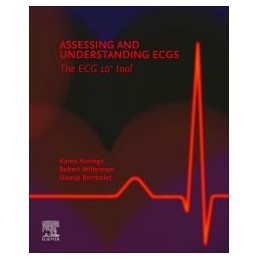- Reduced price
- New

Order to parcel locker

easy pay


 Delivery policy
Delivery policy
Choose Paczkomat Inpost, Orlen Paczka, DHL, DPD or Poczta Polska. Click for more details
 Security policy
Security policy
Pay with a quick bank transfer, payment card or cash on delivery. Click for more details
 Return policy
Return policy
If you are a consumer, you can return the goods within 14 days. Click for more details
This new title is ideal for clinicians working in out-of-hospital settings who need to interpret electrocardiography safely and understand when to consult a cardiologist.
The book presents a new method, ECG10+, for assessing ECGs without missing relevant pathology. The method enables readers systematically and safely to read ECGs by addressing 10 ECG findings and linking them to the clinical presentation. The book covers indications and quality of assessment, how to undertake ECGs, explanations of equipment and assessment of the various types of ECG waves.
Assessing and Understanding ECGs is ideal for GPs, nurses and other healthcare workers who may need to make or interpret ECGs, as well as residents and clinicians working in hospital settings both in and outside cardiology.
Data sheet
